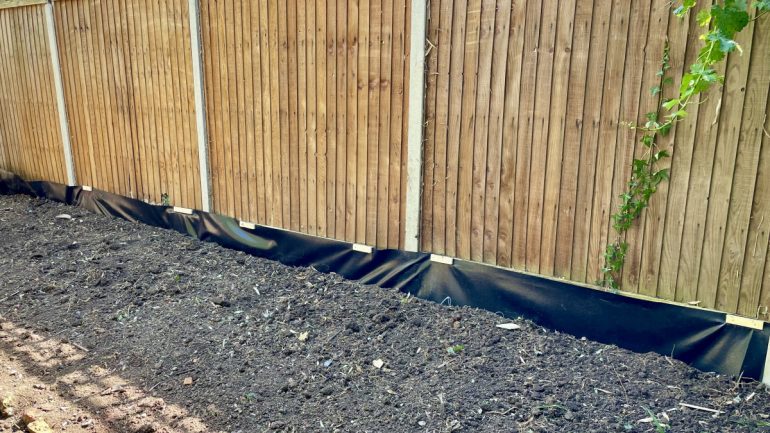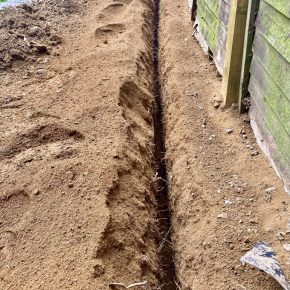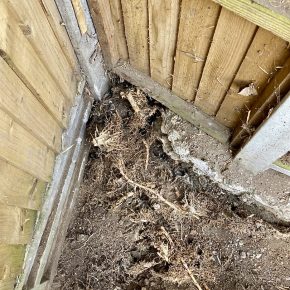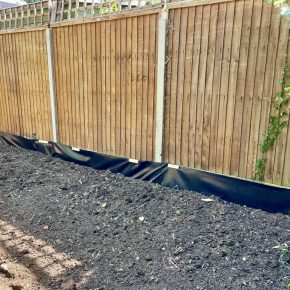Root barriers are frequently the unseen key to successful landscaping and construction projects. When used strategically, they can save money on the maintenance and repairs caused by root damage. But that’s not all. They can preserve neighbourly relations by preventing root encroachment onto neighbouring land. Homeowners are increasingly getting their hands dirty, taking on projects like installing bamboo barrier to prevent encroachment from running bamboo.
Beyond simply safeguarding
The core purpose of root barrier is to block or offer protection from roots; however, this ability extends their use for a range of purposes. Root barriers provide an effective solution for controlling the development of tree roots around newly planted trees and for managing tree-related subsidence. Costs for the installation of root barriers are a fraction of those for underpinning as a result of subsidence. And, new developments can accommodate more trees without posing a threat to nearby buildings or structures.
The invasive plant industry have been using root barriers for some time to block the encroachment of Japanese knotweed and bamboo into neighbouring properties. Thousands can be saved from preventing litigation where encroachment has occurred. Or, in the case of Japanese knotweed, creating burials cells with specialist knotweed root barrier membrane. Less taxed waste to landfill can mean lower project costs and a potentially better project solution.
Root Barriers at Work
Root barriers available in the market are typically designed with a specific task in mind. They can resist the relentless expansion of tree roots, shrubs, and invasive plants, but they also play a crucial role in mitigating root-related problems. Root Spiralling, structural damage, and compromising utility services can be avoided with their use.
Breaking down root barrier use for trees:
There are various tree root barrier types designed to address a number of different challenges.
- Root Barrier Directors: Use these when planting, tree root barrier directors guide roots away from hard surfaces, foundations, and utility trenches.
- Liner Barriers: These are installed around areas you want to protect, even if they’re not right next to the trees e.g. lining utility trenches.
- Ribbed Root Barriers: Urban trees benefit from these, ribbed root barriers encourage roots to grow downward, and prevent spiralling.
- Deep-Root Barriers: When existing trees become a threat e.g. structural root damage or subsidence. A permeable barrier is a good solution here, to safeguard structures and infrastructure.
Choosing the Right Root Barrier for Your Project
Selecting the best root barrier for your project requires consideration of product features. You’ll need to decide between laying weed membrane, which provides permeability and inhibits annual weed growth, and root barriers. Weed membrane won’t resist tree, shrub, and invasive plant roots in both vertical and horizontal applications. In these instances, either a permeable or non-permeable root barrier will need to be specified. Your specific selection will depend on the parameters of your project.
The specialist options available
Root barriers come in various geotextile materials, each serving distinct purposes:
- Permeable Composite Root Barriers: featuring a copper layer; used for subsidence and to block knotweed
- Vertical Ribbed Root Barriers: to direct root growth downward.
- Permeable Non-Woven Polypropylene Geotextile: perfect for weed suppression.
- Semi-Rigid, Non-Permeable HDPE Barriers: perfect for vertical applications.
- Flexible, Impermeable Laminated Woven Geotextile: easily tailored root barrier.
The right choice of barrier or membrane is key to your project’s success.
The installation process
Installing a root barrier does require a level of competency and plant knowledge to determine the correct root barrier depth for your specific scenario. Additionally following manufacturer guidelines, and seeking professional assistance is often essential.
It is also important to know how to join or bond barriers. Specialist barrier joining tape, combined with the prayer fold’ technique, is useful for joining two barriers together. If you want to bond root barrier to a structure, you’ll need root barrier adhesive for a secure seal.
When working on larger projects, heat welding root barriers can be a more efficient solution. Always plan ahead by selecting the right tools for root barrier construction and by taking the necessary protective measures before embarking on project.
Seeking Professional Help
Prioritise safety and work quality. If you’re unsure about your skills, choose a professional root barrier installation company. Attempting a project beyond your expertise could end up tarnishing your reputation.
Different Projects, Different Expertise:
It may be necessary to upskill your team, use a specialist who has the expertise in the following:
- Heat welding and root barrier (geotextile) handling.
- Construction expertise for large-scale horizontal or deep vertical root barrier
- The use of trenching tools and soil saws for bamboo root barrier.
- Mechanical excavation for deep digging.
- Knowledge and expertise for managing invasive species such as Japanese knotweed.
- Awareness of health and safety implications for deep excavation and material handling, locating services and manual handling.
- Waste regulations for disposing of scheduled invasive weeds.
- Legal implications of working close to protected tree or trees in conservation areas.
Root barriers are essentially a landscaper’s tool. Used with plants like bamboo, they can help prevent disputes. They provide plant encroachment prevention and structural protection that safeguards against litigation and costly rectification work.
Using root barrier in new planting schemes will encourage deeper rooting, whilst blocking roots from interfering with utilities and foundations. When used correctly, root barriers provide protection, but they also allow you to create a landscape infrastructure that will last.
By Jon Barton, MD of root membrane specialists, Root Barrier Store.





